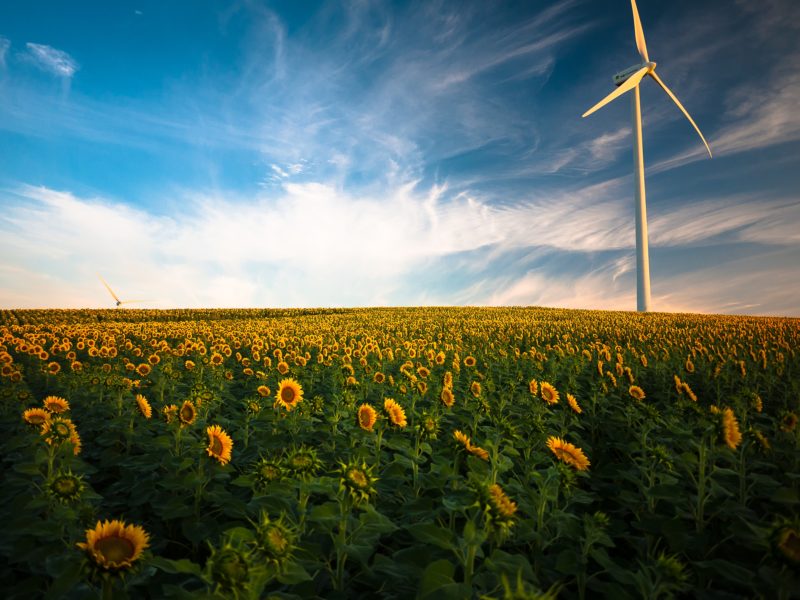 Propane, also known as liquified petroleum gas, or LPG, is a compressed gas stored as a liquid. In addition to being non-toxic, colorless, and odorless, it’s an “approved clean fuel listed in the 1990 Clean Air Act.”
Propane, also known as liquified petroleum gas, or LPG, is a compressed gas stored as a liquid. In addition to being non-toxic, colorless, and odorless, it’s an “approved clean fuel listed in the 1990 Clean Air Act.”
Besides being cleaner and better for the environment than natural gas, propane provides greater flexibility, is reliable, and is safer to use.
Many homes around the country heat their home in the winter using propane, and now we want to talk about the ways this fuel can power your home in the summer, too.
Being able to grill outdoors is one of the special perks of a New England summer. There’s nothing like food fresh off the grill. With a propane-powered grill, there’s no waiting for charcoal to heat up, you have a more even distribution of heat while cooking, and they are much faster when it comes to clean-up. The other benefit of grilling outside on your propane grill is lower energy costs, and you’re not heating your house up during the hot summer nights.
There’s something so magical about warm summer nights when everyone is hanging out on the patio, and the warm glow from the outdoor lights creates an enchanting feel to the evening. Propane tiki torches, or fire torches, are a safe, pretty way to bring ambiance to your backyard. Just be prepared to host backyard parties where no one wants to leave at the end of the night!
Summer nights under the stars can only be ruined by one thing: pesky mosquitoes. Did you know propane mosquito traps are great ways to trap and kill mosquitoes while you’re outside? They are self-contained and use the same signals that the bugs use to find their human victims: heat, carbon dioxide, and water vapor. Propane traps create all three. A catalytic converter changes the propane into carbon dioxide and can catch thousands of mosquitoes in a week.
Propane heaters are a great way to heat not only your patio, but also your pool, spa, or hot tub. They ensure your midnight dip in the pool is always at the right temperature, and they conserve energy, all while saving you money. For any impromptu swims or hot tub parties, propane heaters will heat your water to the perfect temperature more quickly.
Patio heaters can help turn your patio into a three-season feature, rather than a one-season amenity. As opposed to electric heaters, propane-powered heaters are more efficient and cleaner for the environment. They not only can keep your family warm when summer nights start to get a little chilly, but they are also safer than wood-burning fires and electric heating appliances.
The same weather that gives us those warm summer nights also gives us those massive and often destructive summer thunderstorms. When the power goes out, a propane-powered generator will ensure your house still has power. And unlike gas-powered generators, you won’t have to worry about whether the power outage has affected gas pumps. Depending on the generator, you may be able to power your entire house, including your air conditioning unit, and your home security system.
If you are already using propane to heat your home in the winter, it makes sense to use propane to power other appliances in your house, too. Not only does it save money, but it saves you energy when you use propane to run your stove, water heater, or clothes dryer. Did you know that propane appliances can produce twice as much energy as an electric appliance, in the exact same timeframe? In addition to being more cost-friendly and energy-efficient, propane appliances won’t stop working when the power goes out during those summer storms.
Need to know how long your propane tank will last with each of these unique summer uses? Read our blog posts ‘Propane 101: How long does a propane tank last?’ and ‘How to Read a Propane Tank Gauge (With Examples)’. Or, schedule automatic propane deliveries from Santa, so you never run out!

(Photo by Gustavo Quepón on Unsplash)
Actually, there are several drawbacks to natural gas, that have homeowners considering alternative fuel sources for their primary energy. For example:
To find a safer, more cost-effective and more environmentally-friendly fuel sources, homeowners are increasingly considering the following four types of fuel.
Propane, which comes from both natural gas processing and crude oil refining, is the most common alternative to natural gas. Propane is abundant, and also, when compared to natural gas, is a more cost-effective and efficient option. Even though consumers pay a higher price per unit for propane ($26.99 per gallon) than natural gas ($6.23 per cubic foot) by volume, one cubic foot of propane equals 2,516 BTUs, while one cubic foot of natural gas equals 1,030 BTUs. This means propane provides more than twice the energy of natural gas, which makes it a far less expensive alternative to natural gas because you get more for your buck.
Though propane is a flammable substance and should be handled carefully, it’s not common for propane tanks to explode. Propane tanks are rarely connected or used in gas pipelines, which make this energy source less risky than natural gas. In comparison, natural gas lines pose a greater threat to leaking and causing potentially deadly accidents. Take, for instance, the 2010 PG&E natural gas explosion in San Bruno, Ca that left eight people dead.
Just like natural gas, propane is best used for everyday appliances like:
Propane is also an excellent fuel source for outdoor cooking as die-hard barbequers prefer the taste of food cooked over a propane grill to one fueled by natural gas.
If you’re looking for a cost-effective and familiar alternative to heat your everyday uses, propane is a good choice to replace natural gas.
Many homeowners are hesitant to install solar in their home because the upfront costs feel extreme. At the time this article was written, the average nationwide solar panel cost is $3.05 per watt. And, the average solar panel system size in the U.S is around 6 kilowatts (6000 watts). That means outfitting a home with solar will cost about $18,300. Even with the 30 percent tax credit the U.S. government offers, homeowners can still expect to pay roughly $12,810 for new equipment. The installation costs are similar to installing a natural gas pipeline into your home.
Solar power is energy derived from the sun then is converted into electric or thermal energy. Because of this process, the Solar Energy Industries Association, claims it is one of cleanest and most bountiful renewable energy source available. And while solar is much more eco-friendly and safe than natural gas, it’s worth mentioning solar panels pose small safety hazards and risks for technicians constructing, installing, and maintaining the panels, according to the U.S. Occupational Safety and Health Administration.
Solar energy is versatile in its many uses and is used to generate electricity, provide lighting, and water heating. However, if you have many utilities powered by gas, solar energy may not be your best alternative, as there is no gaseous form of solar power.
Compared to natural gas, solar power is cleaner, safer, and cheaper and can be a great source of electricity. However, the upfront costs to install new equipment may deter many homeowners from converting to solar.
Biomass is an attractive fuel source because it’s renewable and easy to grow. Still, even for an easily accessed fuel, when compared to natural gas, biomass is a bit more expensive for residential use. Small-scale biomass electric plants have calculated the cost of biomass energy can reach $0.15 per kilowatt-hour (kWh), whereas natural gas is around $0.12. Though the difference is pennies, the costs will add up over the year. For example, a single, 500-watt halogen lightbulb, that you use for .25 hours a day, every day will cost you roughly $6.84 per year with biomass $5.48 per year with natural gas.
Biomass is a low carbon, low emission fuel, which is great for the environment. However, there have been concerns about biomass’ effect on human health. In 2016, numerous health organizations wrote a letter to Congress denoting that biomass negatively impacts human health, and contributes to asthma attacks, cancer, heart attacks, and poorer quality of health. The jury is still out on the overall safety of biomass, makes many homeowners reluctant to introduce it in their home.
If you are in search of a gaseous replacement for natural gas, biomass is an option. Specifically, biomass is a great alternative if you live in a rural area and it’s difficult to access natural gas or propane. Biomass can heat appliances and act as a portable cooking source if you’re a camper. Furthermore, biomass can also great for power generators and mechanical engines.
Depending on your geographic location, biomass may be a viable alternative for natural gas. However, its potential health risks may make it a riskier choice than other options on the market.
For those with access to a company selling wind energy, the cost of this alternative fuel is unbeatable. The current price per kilowatt hour averages a mere $0.02, compared to natural gas’ $6.23 per unit price. However, if you’re unable to purchase energy from a company, you’ll need a wind turbine that converts 100 kilowatts of energy to power your home, and that’s an expensive investment. Specifically, the initial cost and preparation of installing wind turbines can range from $50,000 to $80,000. Not to mention the space required to house such a large piece of equipment.
Wind energy is a clean and renewable energy source. It does not pollute toxins into the air or contribute to greenhouse gases as natural gas does. However, like solar energy, wind turbines do pose a safety threat to maintenance and installation workers. Wind turbines also have led to the increase in bird and bat deaths due to the aerial space they occupy, which has pushed some groups to work toward the creation of ‘no-blade’ turbines.
Wind energy is versatile and can produce both mechanical energy and electricity. That means, it’s great for all aspects of residential and commercial energy — from heating and cooling to everyday appliances.
When it comes to wind energy, if you have access to an energy company that provides the resource, or space, money, and proper climate to install your own wind turbines, it could have huge returns on your investment.
Other alternative fuels are on the horizon as well. For instance, syngas, which is typically reserved gas-fueled engines and generators, has started to become a viable replacement for the generation of heat and power on a small scale. Though the cost of syngas directly correlates to the prices of natural gas, it could eventually become a cost-effective way for homeowners to fuel their appliances.
At the end of the day, the alternate fuel you select will depend on your preferences and accessibility to new options.

(Photo/Pexels)
To enjoy the benefits of propane, you must equip your home with a propane tank. To ensure you’re storing and securing your propane tank adequately, federal, state and local ordinances govern installing, dispensing and refilling propane tanks properly.
Follow this guide to discover what you need to know about the policies regulating your home’s propane tank.
The primary considerations you should know are how far a propane tank needs to be away from houses, buildings, driveways, awnings, and property lines to ensure legal and safe placement of your above or underground propane tank.
These placement regulations will vary based on the size of your propane tank.
These tanks are most often used to power cooking ranges, indoor fireplaces, or other small appliances. They are also portable. Still, when placing a 100-pound propane tank on your property, you must adhere to the following requirements:
A 100-gallon propane tank does well with equipment that requires substantial power but isn’t used every day. For example, you may use it for an emergency generator or heating outdoor swimming pools. When placing a 100-gallon propane tank on your property, keep these measurements in mind:
Additionally, four (or fewer) 100-gallon tanks can be placed next to each other on a single property as long as placement restrictions are adhered to.
This size tank is the most common for residential propane use as it’s suitable for home heating, running everyday appliances, powering generators, and more. With a larger tank, you won’t need to bother with as many refills, but need to adhere to additional requirements during installation:
If you have a large home, like over 4,500 square feet, a 1000-gallon propane tank is your best bet for keeping your home heat running and your everyday appliances in operation. 1,000-gallon tanks are also common for agricultural purposes. For this size tank, distance measurements are as follows:
If two, 1000-gallon tanks are placed within 3 feet of each other, each of the above clearance requirements increases to 25 feet.
If these numbers seem confusing, don’t fret. Top propane companies and professionals will know, and explain the propane tank distance requirements you must abide by when installing a propane tank on your property.
In addition to clearance requirements, underground tanks need to adhere to depth guidelines, which are defined in the LP Gas Code (NFPA 58). These measurements are as follows:
Before the propane tank installation process, you’ll need to consider the clearance and depth guidelines.
The answers to these questions will inevitably help you decide the best placement of your propane tank.
But, you’ll also need to factor in other systems in your home so when it comes time installation, you don’t disturb existing work:
Once the installation of your propane tank is complete, the safety protocols continue. Specifically, upon each refill, your propane tank will need to be inspected for rusting, pitting, and structural integrity. In Connecticut, it may also be required to conduct survey readings, records audited and spot checks for new construction.
It’s best to work with a propane company who knows your state and county ordinances so that you can ensure proper installation and ongoing use of your propane tank.